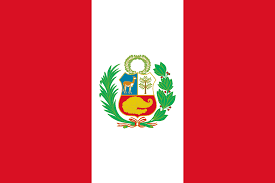Peruvian flag Colors Code hex, png svg
The flag of Peru consists of three vertical stripes: red, white, and red. It has a rich history and meaningful symbolism:
History
- 1820s: The first flag was adopted after Peru declared its independence from Spain in 1821. Several designs were used until the current one was officially adopted in 1825 by General Simón Bolívar.
- Design Stability: The current flag design has remained largely unchanged since its official adoption, although minor modifications have been made to the coat of arms which appears on the state flag.
Colors and Their Meaning
- Red: This color represents the blood shed by the heroes and martyrs who fought for Peru’s independence. It symbolizes bravery, strength, and sacrifice.
- White: The white stripe symbolizes peace, purity, and justice, reflecting the nation’s aspiration for harmony and the moral integrity of its people.
Flag Variants
- National Flag: The national flag consists solely of the three vertical stripes.
- State Flag: The state flag includes the national coat of arms in the center of the white stripe, featuring a vicuña (a native animal), a cinchona tree (source of quinine), and a cornucopia spilling coins, symbolizing Peru’s rich biodiversity, natural resources, and prosperity.
Guess the Flags Quiz
Sharing is caring 🤗

National Symbols 👇
- 🏁 National Flags
- 🦁 National Animals
- 🐦 National Birds
- 🌻 National Flowers
- 🌴 National Trees
- 🥭 National Fruits
- 🍹 National Drinks
- 👴 National Founders
- ☘️ National Emblems
- 🍲 National Dishes
- 🏛️ National Monuments
- ✍️ National Poets
- 🕌 National Mausoleums
- 🎺 National Instruments
- 🦸 National Heroes
- 📆 National Days

